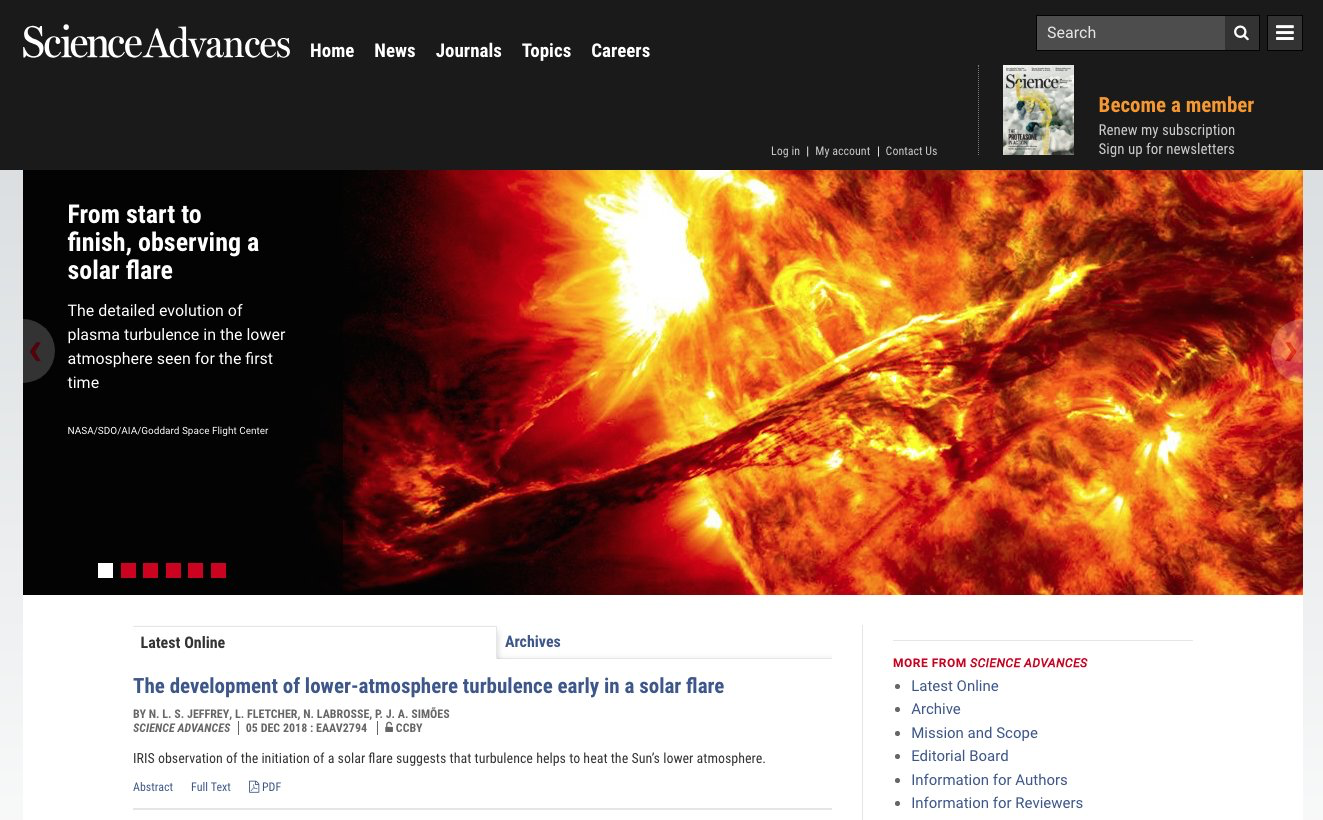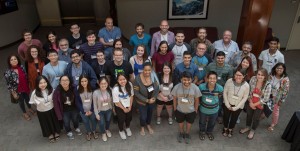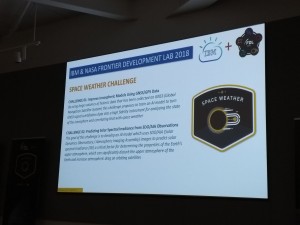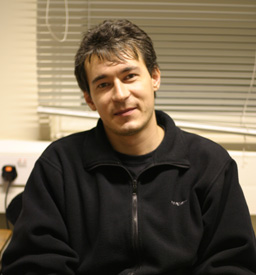In the Science Advances article, “The development of lower-atmosphere turbulence early in a solar flare” the first observational study of the onset and evolution of solar flare turbulence in the lower solar atmosphere on an unprecedented time scale of 1.7s using the Interface Region Imaging Spectrograph is presented.
The work, performed by A&A group members Natasha Jeffrey, Lyndsay Fletcher, Nicolas Labrosse and Paulo Simões, was published in Science Advances on the 5th December 2018. The flare (image below) occurred on the 6th December 2016.

The flare observations are consistent with turbulence in the lower solar atmosphere at the flare onset, heating that region as it dissipates. This challenges the current view of energy release and transport in the standard solar flare model, suggesting that turbulence partly heats the lower atmosphere.




